Today I’m diving deep into a dish that’s a real blast from the past, but is making quite the comeback: Hog Maws. Now, I get it, the name alone might not have you rushing to the kitchen, but hear me out for reals boos. If you grew up like I did, you might remember your grandma or your aunties talking about how hog maws were the central highlight in the South every New Year’s Day.
This post may contain affiliate links. Read our disclosure policy.
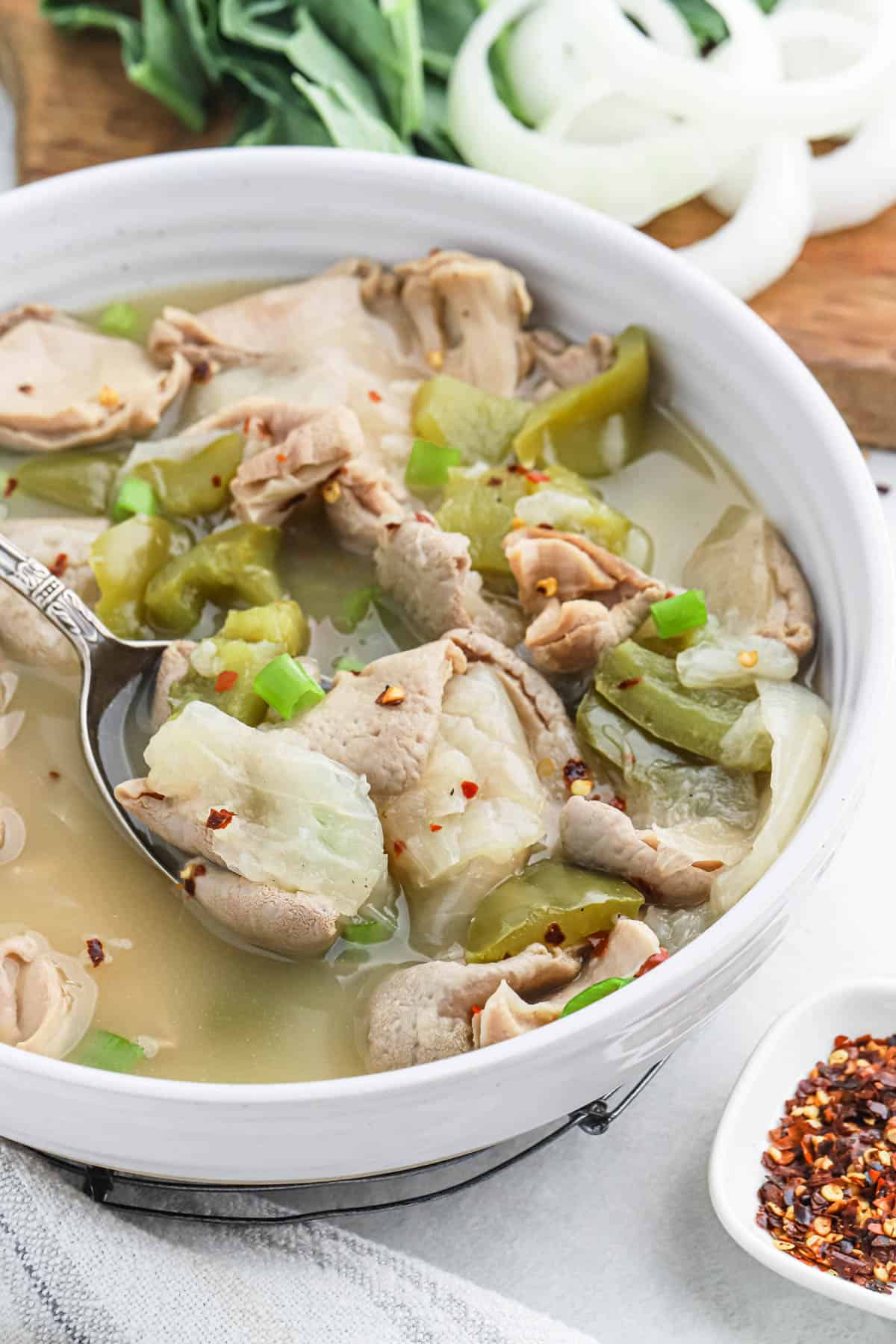
If you want to know what are hog maws, these bad boys are basically the stomach of the pig. And y’all, when it comes to flavor, hog maws don’t play around! They’re like the unsung hero of the soul food world, often used to infuse stews and broths with an extra layer of richness. So, if your taste buds are curious, but you’re a bit hesitant, just give them a try! Go grab your biggest pot, and let’s get cooking!
Why you’ll love this hog maws recipe
- Simple Ingredients, Big Flavors: We’re working with basic pantry staples here—seasoning salt, garlic powder, black pepper, and maybe a few red pepper flakes for some kick. These simple ingredients work wonders on the hog maws, turning them into a flavor-packed dish.
- Tradition in Every Bite: This isn’t just food, y’all; it’s history and culture served up on a plate! Whether you grew up eating it or you’re a first-timer, this recipe is a delicious way to honor a time-tested tradition in Southern cuisine.
- Waste-Not Mentality: This hog maws recipe truly embraces the “use every part” philosophy. By cooking it, you’re paying homage to generations who believed in making the most out of every bit they had.
- Versatile Serving Options: While traditionally paired with collard greens, chitterlings, and cornbread, these hog maws are versatile. Want to mix things up? Serve them with rice, roasted veggies, or even a bowl full of butter beans!
Ingredients to make Hog Maws
- Hog Maws: These are the real showstoppers of the dish, but here’s the thing: they need a good scrubbing. You’ll want to get them nice and clean before cooking, but don’t worry—I’ll walk you through that!
- Yellow Onion: I’m using a small yellow onion here for its sweet, aromatic profile that’s perfect for building a flavor base. Feel free to use white onions if that’s what you’ve got on hand.
- Green Bell Pepper: This adds a subtle, mild pepperiness to the dish without being overwhelming. Plus, it adds a pop of color!
- Seasoned Salt: I like Lawry’s, but use what you have. This is your shortcut to a blend of flavors like salt, garlic, and additional herbs that make a great seasoning foundation for your hog maw.
- Garlic Powder: Because, let’s be real, is it even a Southern dish without garlic?
- Black Pepper: It adds that touch of heat and spice to balance out the other flavors.
- Crushed Red Pepper Flakes: Optional, but if you’re like me and you love a little kick, sprinkle them in!
- Apple Cider Vinegar: Also optional, but a teaspoon of ACV can cut through the richness of the hog maws and add a tangy twist.
- Hot Sauce: For serving. Now, this is where you get to be picky and choose your favorite. Whether you like it tangy, fiery, or smoky, a good hot sauce can elevate your hog maws to the next level. Drizzle as much (or as little) as you like!
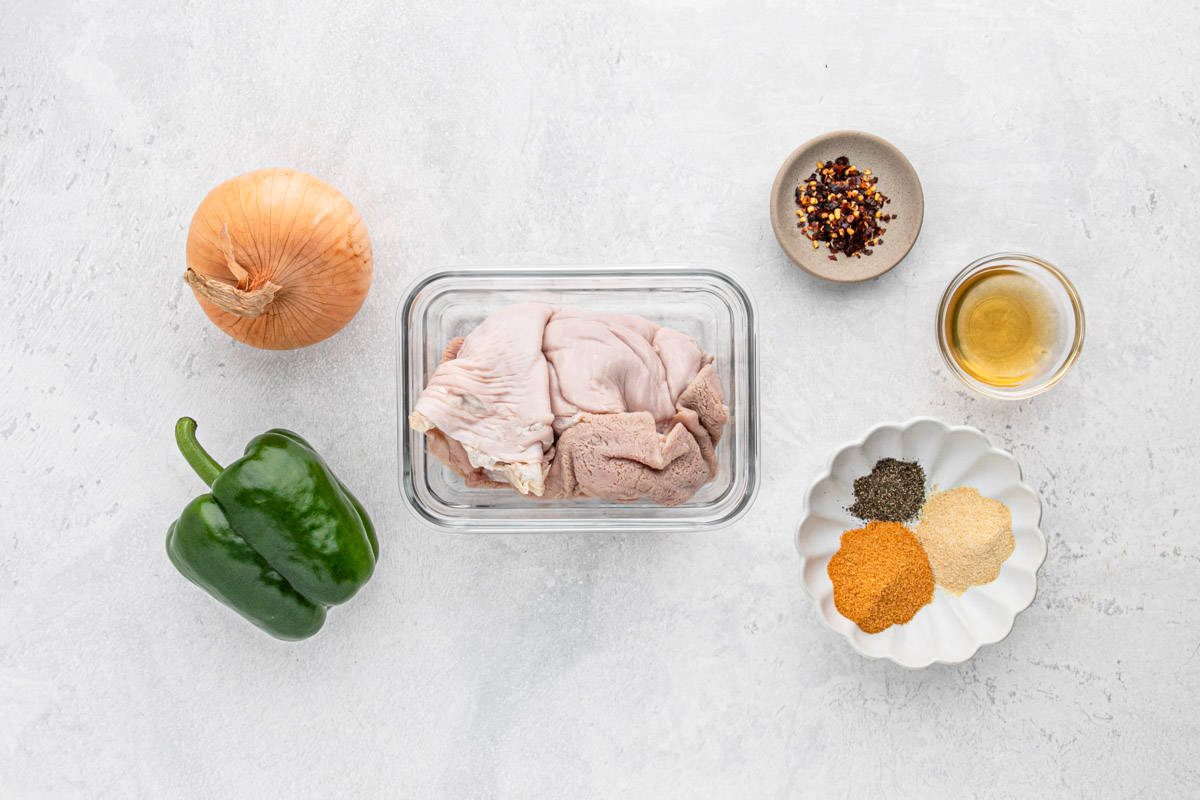
How to make Hog Maws
Cleaning the Hog Maws:
- Prepare a double sink or two separate wash sinks for the cleaning process. Start by rinsing the hog maws one by one under room temperature water to remove any excess debris. Carefully inspect each hog maw and remove any visible grit or black substances, then move to the other sink.
- Repeat the rinsing process 2 or 3 more times, ensuring they are clean and free from any impurities. Once they are clean, set them aside.
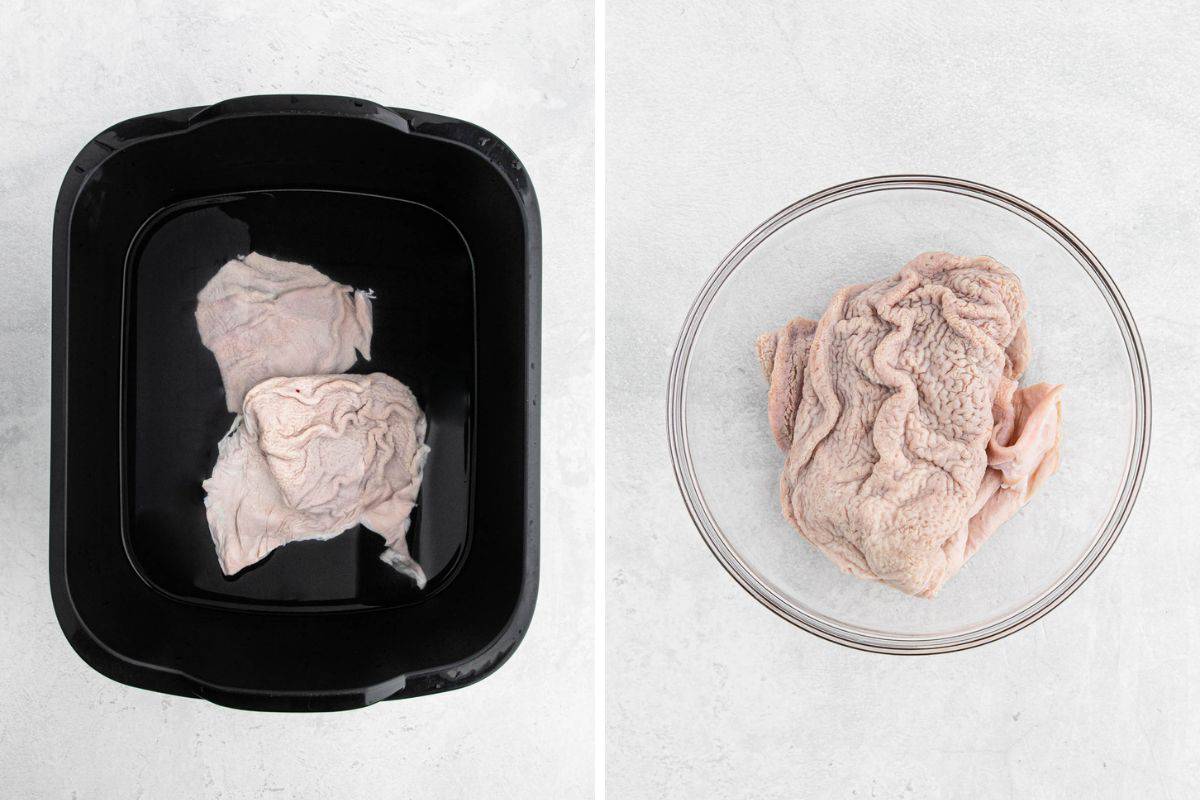
Cooking the Hog Maws:
- In a very large pot, fill it with water, then add the onion and green pepper along with salt, garlic powder, black pepper, and red pepper flakes or apple cider vinegar if using.
- Mix the ingredients, turn heat to high and bring to a rapid boil.
- Once boiling, turn heat to medium and add the cleaned hog maws one at a time to the pot. Stir gently to distribute the seasonings evenly.
- Cover the pot and cook the hog maws over medium heat until they are very tender and the flavor of the remaining liquid should be concentrated. Occasionally check the pot to check on them.
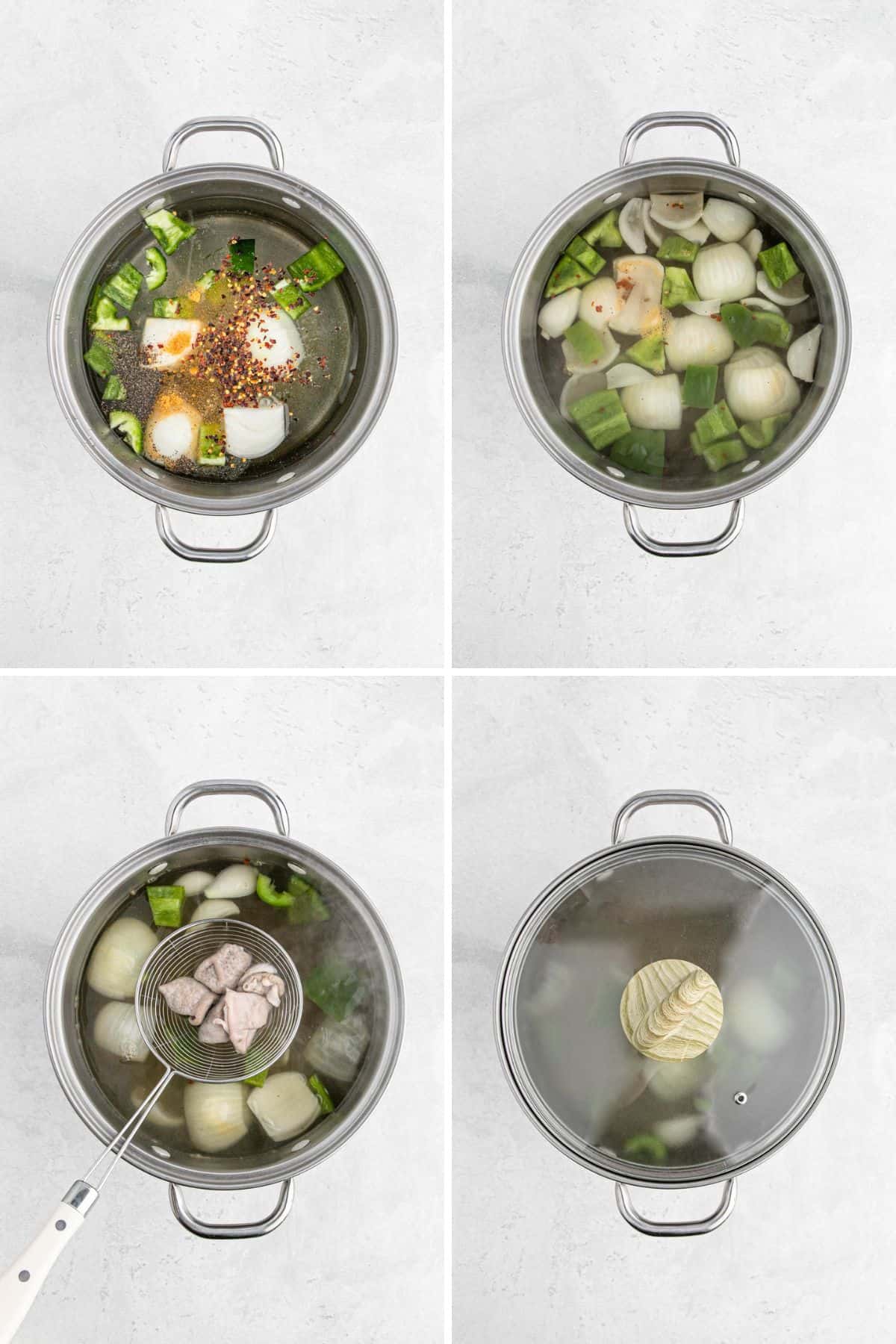
Serving the Hog Maws:
Once the hog maws are cooked and tender, taste for flavor and adjust before removing from the heat.
Serve the hog maws hot or even make them along with the Chitterlings next time as a part of a larger meal. They are usually served with hot sauce to enjoy.
Tips for making the best Hog Maws
- Use the Double Sink Method: When cleaning hog maws, this method is a game-changer for keeping your prep area hygienic. By using two sinks (or two large bowls if you don’t have double sinks), you can keep the cleaning process efficient. First, rinse in one sink to remove initial debris, then move to the second for a thorough cleanse.
- Texture Test: Around the 2-hour mark, gently poke the hog maws with a fork to check for tenderness. They should be tender but not falling apart. Overcooking them might make them mushy, and nobody wants mushy hog maws!
- Skim the Broth: After cooking, you’ll notice the remaining liquid is concentrated in flavor. This is a good time to skim off any excess fat from the top. It enhances the overall texture and makes for a lighter bite.
- Check the Water Level Occasionally: During the 2-3 hours of cooking, make it a point to occasionally check the water level in the pot. If it’s reducing too quickly, you might want to add a bit more to prevent the hog maws from drying out or sticking to the bottom.
- Let Them Rest After Cooking: Once your hog maws are tender and cooked to perfection, let them rest for a few minutes before serving. This allows the flavors to meld further.
Popular substitutions & additions
- Smoked Paprika: If you love a smoky flavor, consider adding a teaspoon of smoked paprika to the pot. It gives a beautiful color and a smoky undertone that pairs wonderfully with the richness of the hog maws.
- Jalapeño Peppers: Want to turn up the heat? Swap out the green bell pepper for a couple of sliced jalapeños. This will give your hog maws a kick that spice enthusiasts will love!
- Celery: For added crunch and a different texture, throw in a couple of chopped celery stalks. They will lend a refreshing crispness that complements the tender hog maws.
- Sliced Smoked Sausage: As the hog maws are simmering, adding some smoked sausage can provide a complementary flavor and texture. It also bulks up the dish, making it even more hearty!
- Throw in Some Vegetables: To make it a wholesome one-pot meal, consider adding chunks of potatoes, carrots, or even green beans during the last hour of cooking. They’ll absorb the flavors!
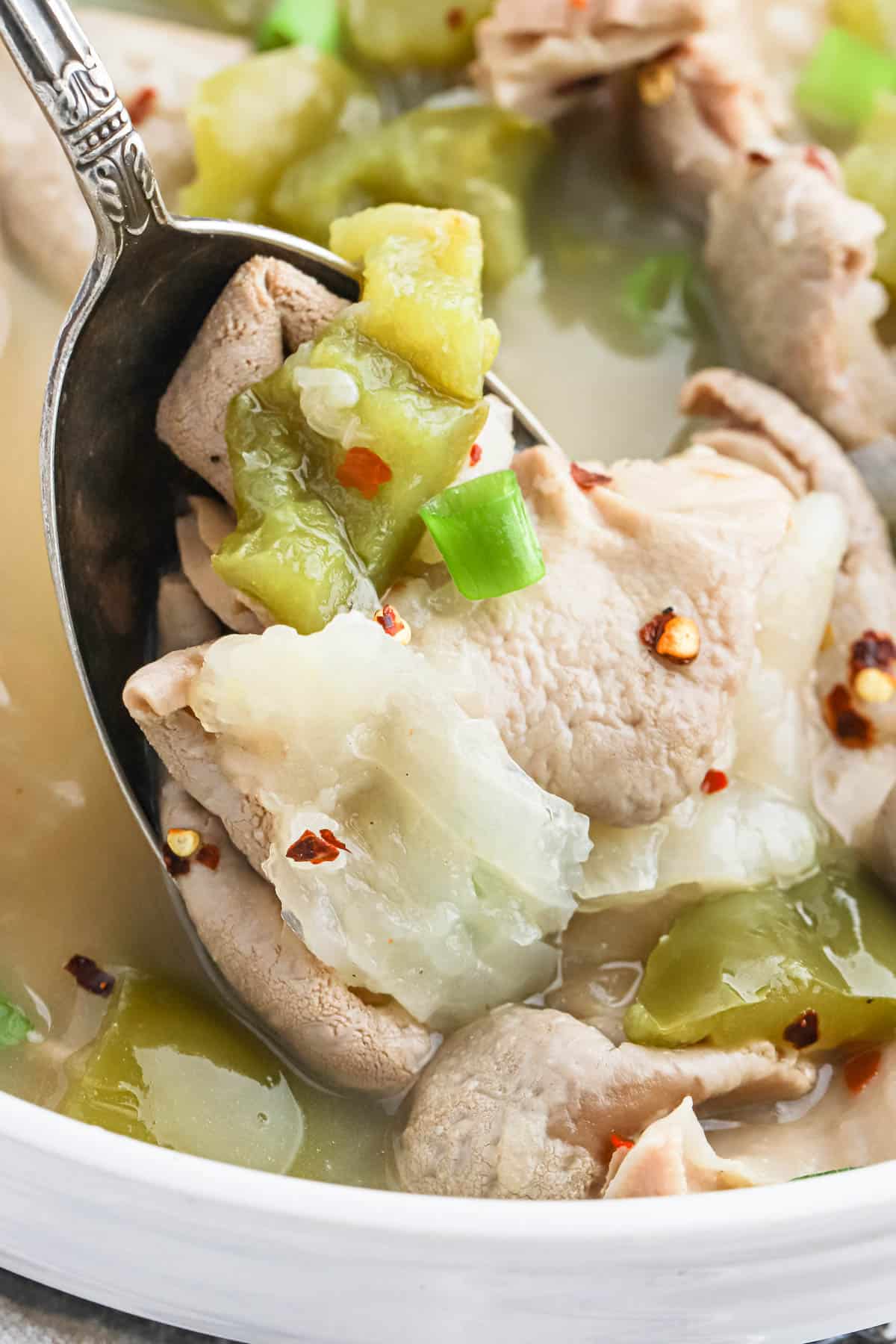
What to serve with Hog Maws
- I can’t stress it enough—Hog Maws and Chitterlings go together like biscuits and gravy. If you’ve already committed to cooking hog maws, go all out and add some chitterlings to the mix. Their contrasting textures and flavors make for a great Southern food experience!
- There’s nothing quite like the comfort of warm, crumbly Cornbread to pair your hog maws. The mild sweetness and grainy texture of the cornbread make it the perfect sidekick, great for soaking up that flavorful broth left in the pot.
- To bring a splash of color to the table, pair them with Collard Greens. The slightly bitter, earthy taste of the greens complements the rich and savory hog maws.
- Last but not least, throw in some creamy Butter Beans. They are a classic Southern side that can round out your hog maws meal beautifully!
How to store & reheat Hog Maws
After allowing the hog maws to cool to room temperature, transfer them to an airtight container, ensuring there’s a bit of broth or juices to keep them moist. Then, seal the container tightly to prevent any air from getting in, which helps retain their tenderness and flavor.
When you’re ready for round two, the best way to reheat your hog maws is on the stovetop. Pour them into a pot, cooking liquid and all, and warm them up over low heat. Stir occasionally to make sure they heat evenly. If they seem a bit dry, you can add a splash of water or broth to bring them back to life.
How long will Hog Maws last in the fridge?
Your hog maws should last for about 3-4 days in the fridge when stored properly. After that period, the flavors will start to decline, and you run the risk of spoilage. So, it’s best to enjoy them within that timeframe!
Can I freeze Hog Maws recipe?
Yes, you can freeze this hog maws recipe! Place them in a freezer-safe airtight container, again along with some of their cooking liquid for moisture. Label the container with the date, and they should keep well for up to 3 months. When you’re ready to defrost, it’s best to let them thaw overnight in the refrigerator before reheating.
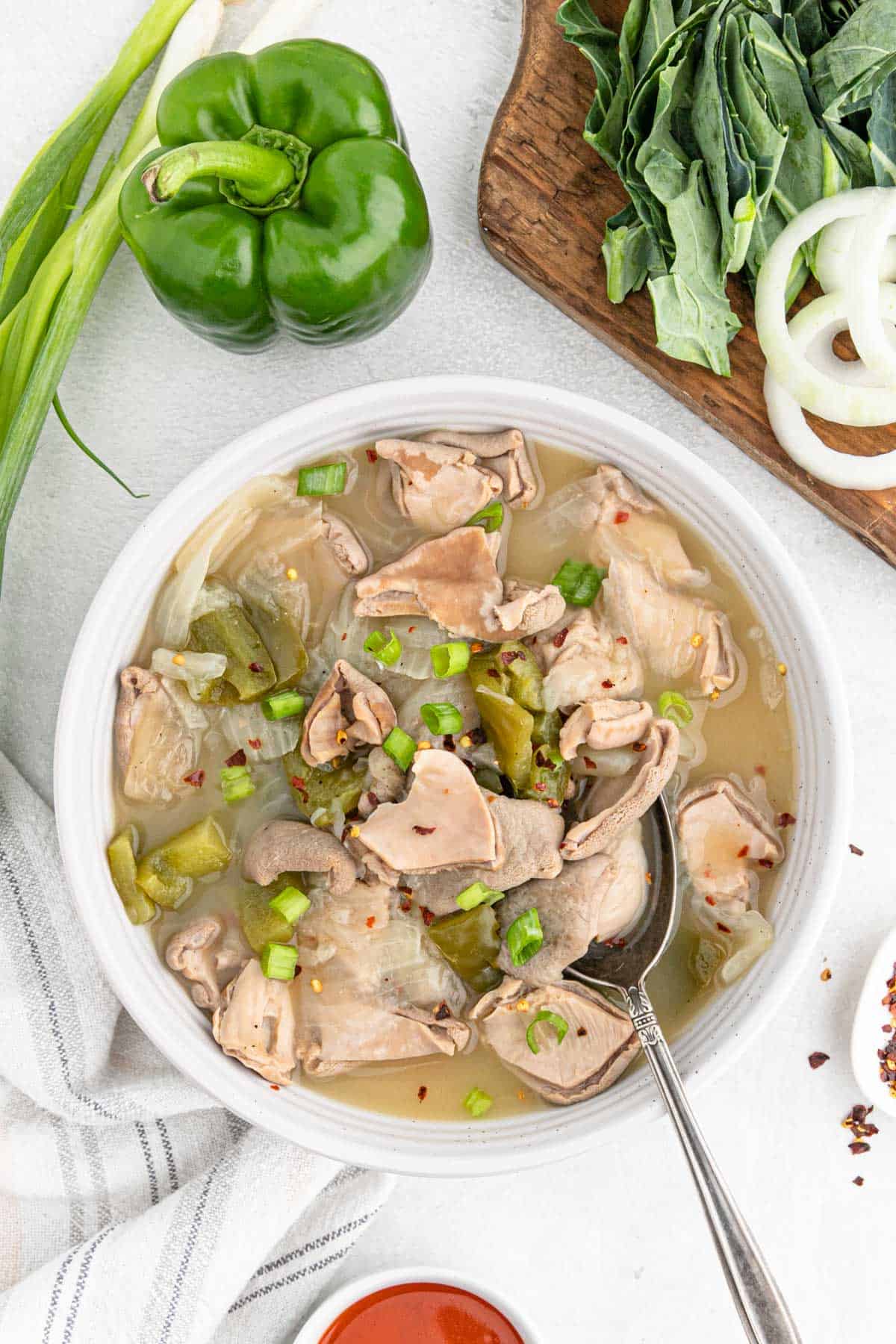
Frequently asked questions
Can I use an Instant Pot to speed up the cooking process?
Absolutely! Using a pressure cooker or Instant Pot can significantly reduce the cooking time. Just make sure to adjust the cooking time according to your appliance’s guidelines. Generally, 1 to 1 and a half hours on high pressure should do the trick.
Is it okay to cut the hog maws into smaller pieces?
Yes, you can cut them into smaller pieces if you’re pressed for time. Just bear in mind that smaller pieces will cook faster, so you’ll need to adjust your cooking time accordingly. Also, smaller pieces may not hold their texture as well as larger chunks, so it’s a trade-off.
What can I do with the leftover cooking liquid?
Don’t throw it away! The cooking liquid is packed with flavor and can be used as a base for soups, gravies, or even as a broth for cooking rice and other grains. Just strain out any solids and store it in the fridge for up to a week or freeze it for longer use.
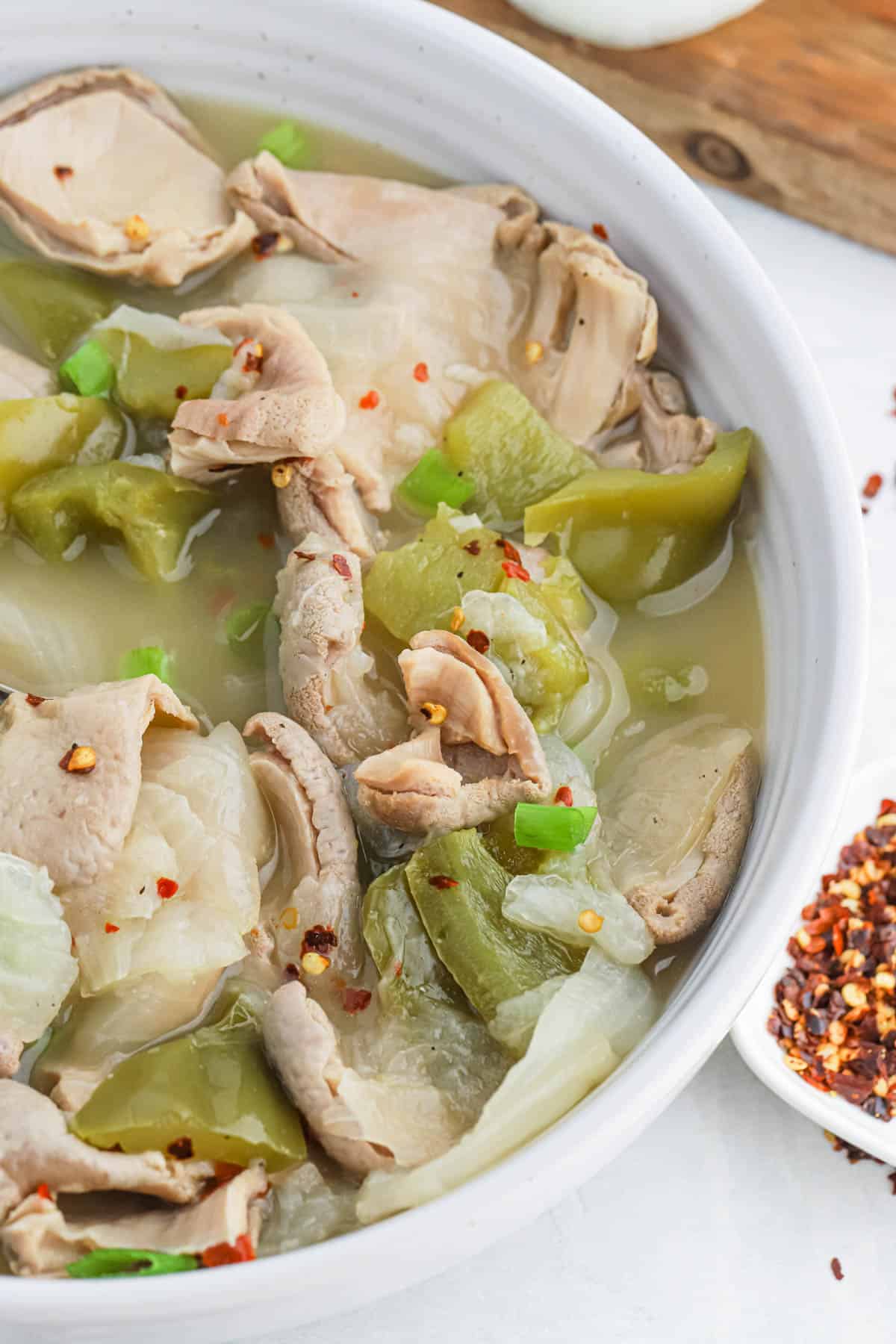
If you’re looking to learn how to cook hog maws, this is your go-to guide for transforming this often-overlooked cut into a dish that’ll have everyone coming back for seconds! The best part? You don’t need to be a chef to whip this up baby! With the right ingredients and a pinch of patience, you can recreate this Hog Maws recipe right in your own kitchen and keep the Southern family traditions alive—or start a new one!
More Classic Southern recipes
- Southern Green Beans Recipe
- Fried Green Tomatoes Recipe
- Southern Potato Salad
- Old-Fashioned Southern Peach Cobbler
- 26 Southern Comfort Food Recipes
*Did you make this recipe? Please give it a star rating and leave comments below!* Post a photo of how your version of the recipe came out on Instagram (using #grandbabycakes)!!
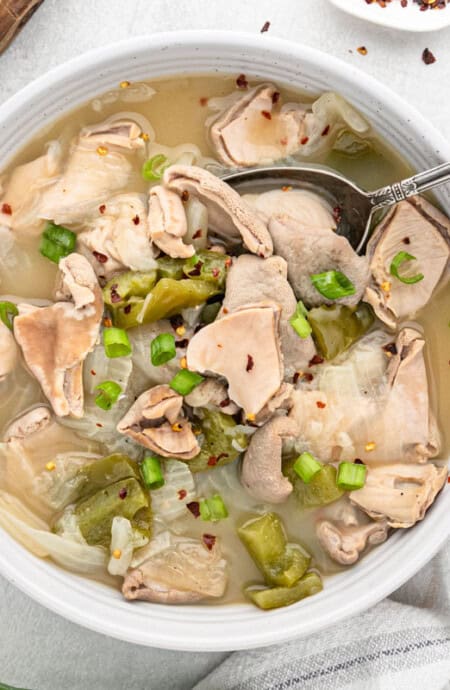
Hog Maws Recipe
Want to Save This Recipe, Boo?
Equipment
Ingredients
- 3-5 lbs hog maws thawed and cut into 1 inch pieces
- 1 small yellow onion chopped
- 1/2 green bell pepper chopped
- 1 1/2 tsp seasoned salt like a Lawry’s
- 1 tsp garlic powder
- 1/4 teaspoon black pepper
- 1/2-1 tsp crushed red pepper flakes optional
- 1 tsp apple cider vinegar optional
- Hot sauce for serving
Instructions
Cleaning the Hog Maws:
- Prepare a double sink or two separate wash sinks for the cleaning process.
- Ensure the sinks are thoroughly cleaned before adding the hog maws.
- Start by rinsing the hog maws one by one under room temperature water to remove any excess debris.
- Carefully inspect each chitterling and remove any visible grit or black substances then move to the other sink.
- Repeat the rinsing process 2 or 3 more times, ensuring they are clean and free from any impurities.
Cooking the Hog Maws:
- In a very large pot (we use a 5 gallon pot), fill it with 1/2-1 gallon of water then add quartered onion and green pepper along with salt, garlic powder and black pepper and red pepper flakes or apple cider vinegar if using, and turn to high heat and bring to a rapid boil.
- Once boiling, turn heat to medium and add the cleaned hog maws one at a time to the pot.
- Stir gently to distribute the seasonings evenly.
- Cover the pot and cook the hog maws over medium heat for about 2-3 hours, or until they are very tender and the flavor of the remaining liquid should be concentrated. Occasionally check the pot to check on them.
Serving the Hog Maws:
- Once the hog maws are cooked and tender, taste for flavor and adjust before removing from the heat.
- Serve the hog maws hot or even make them along with the chitterlings next time as a part of a larger meal. They are usually served with hot sauce so enjoy.
Notes
Tips for making the best Hog Maws
- Use the Double Sink Method: When cleaning hog maws, this method is a game-changer for keeping your prep area hygienic. By using two sinks (or two large bowls if you don’t have double sinks), you can keep the cleaning process efficient. First, rinse in one sink to remove initial debris, then move to the second for a thorough cleanse.
- Texture Test: Around the 2-hour mark, gently poke the hog maws with a fork to check for tenderness. They should be tender but not falling apart. Overcooking them might make them mushy, and nobody wants mushy hog maws!
- Skim the Broth: After cooking, you’ll notice the remaining liquid is concentrated in flavor. This is a good time to skim off any excess fat from the top. It enhances the overall texture and makes for a lighter bite.
- Check the Water Level Occasionally: During the 2-3 hours of cooking, make it a point to occasionally check the water level in the pot. If it’s reducing too quickly, you might want to add a bit more to prevent the hog maws from drying out or sticking to the bottom.
- Let Them Rest After Cooking: Once your hog maws are tender and cooked to perfection, let them rest for a few minutes before serving. This allows the flavors to meld further.
Nutrition
Want to Save This Recipe, Boo?
This looks amazing and such a treat! Thank you!
Such a delicious meal! Thanks for this easy to follow recipe!
I remember hearing about how maws when I lived in the South, but never did get to try them out! Bookmarking this recipe so I finally can!
First time making this, and it came out fantastic! Thanks for such a great recipe!
I’ve definitely heard of hog maws, but never tried them- this looks delicious and I can’t wait to give it a try!
I stumbled on this site by accident, and I’m so glad I did. The recipes are amazing! Now I have to buy Jocelyn’s cookbook.
Aw, thank you so much, Wanda!